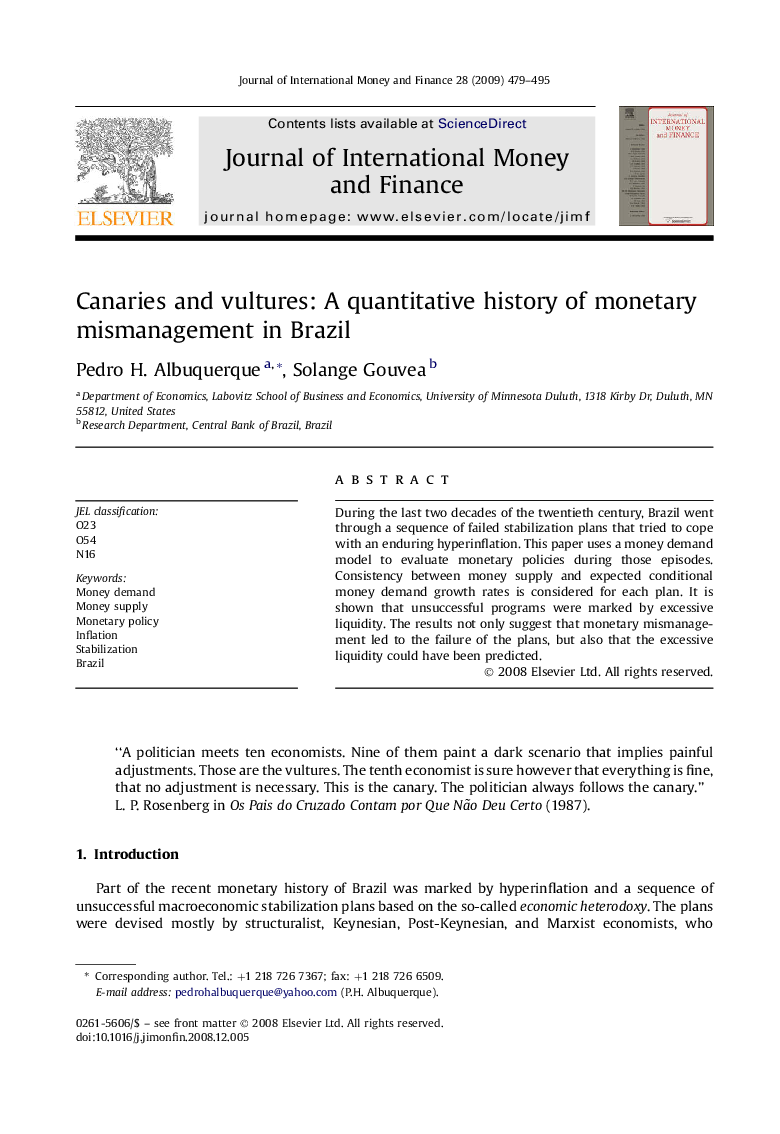| Article ID | Journal | Published Year | Pages | File Type |
|---|---|---|---|---|
| 964824 | Journal of International Money and Finance | 2009 | 17 Pages |
Abstract
During the last two decades of the twentieth century, Brazil went through a sequence of failed stabilization plans that tried to cope with an enduring hyperinflation. This paper uses a money demand model to evaluate monetary policies during those episodes. Consistency between money supply and expected conditional money demand growth rates is considered for each plan. It is shown that unsuccessful programs were marked by excessive liquidity. The results not only suggest that monetary mismanagement led to the failure of the plans, but also that the excessive liquidity could have been predicted.
Related Topics
Social Sciences and Humanities
Economics, Econometrics and Finance
Economics and Econometrics
Authors
Pedro H. Albuquerque, Solange Gouvea,
